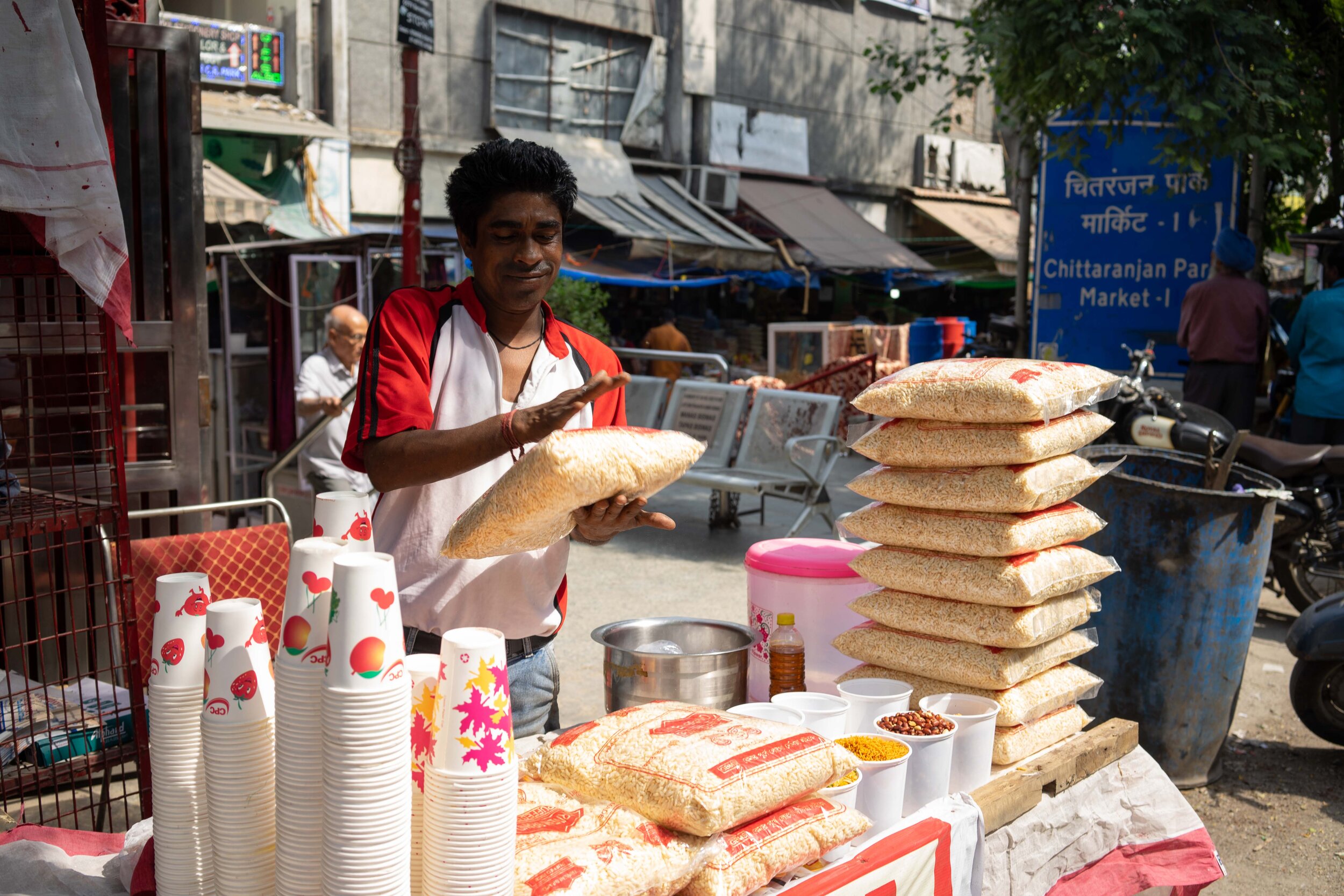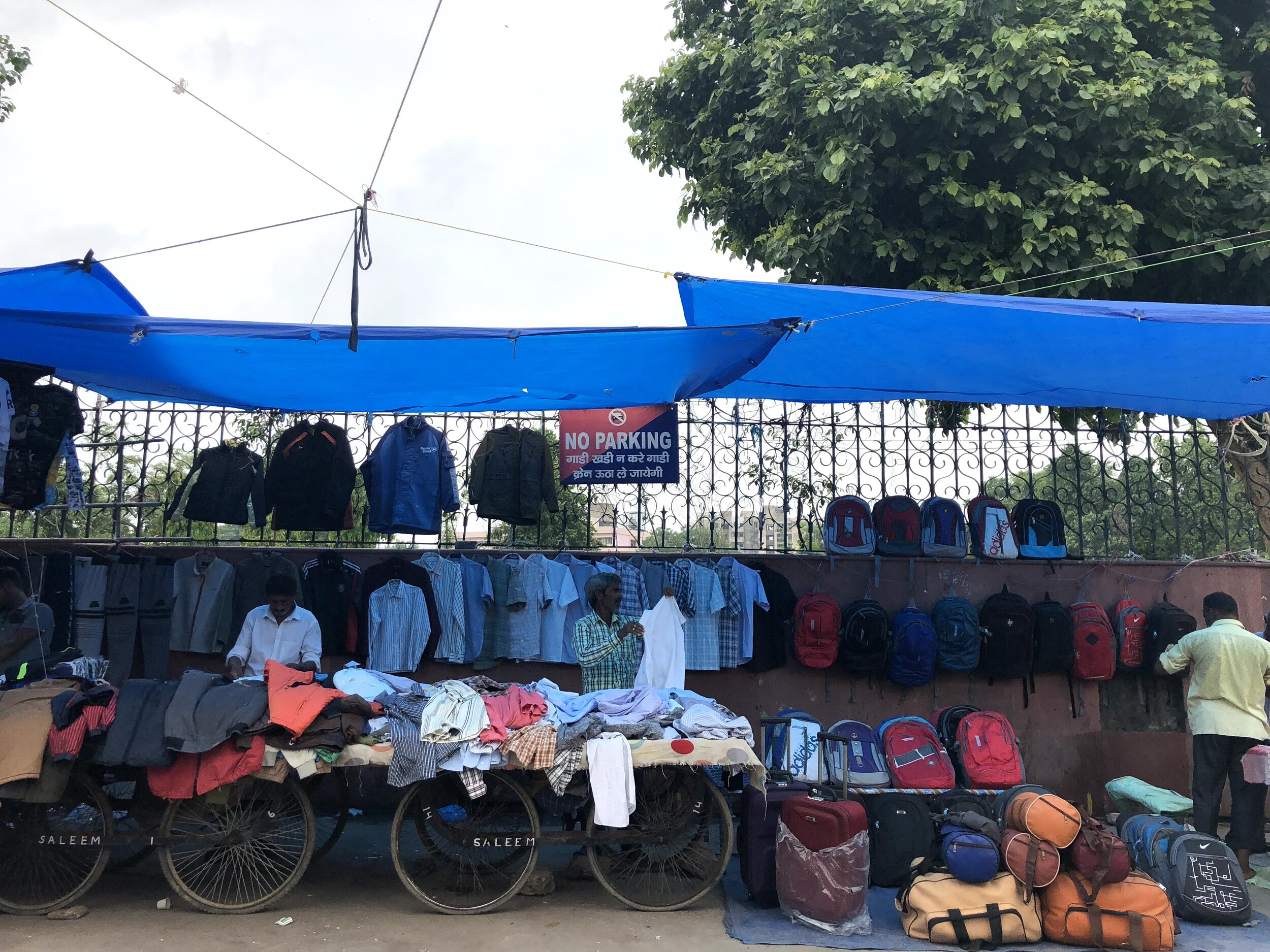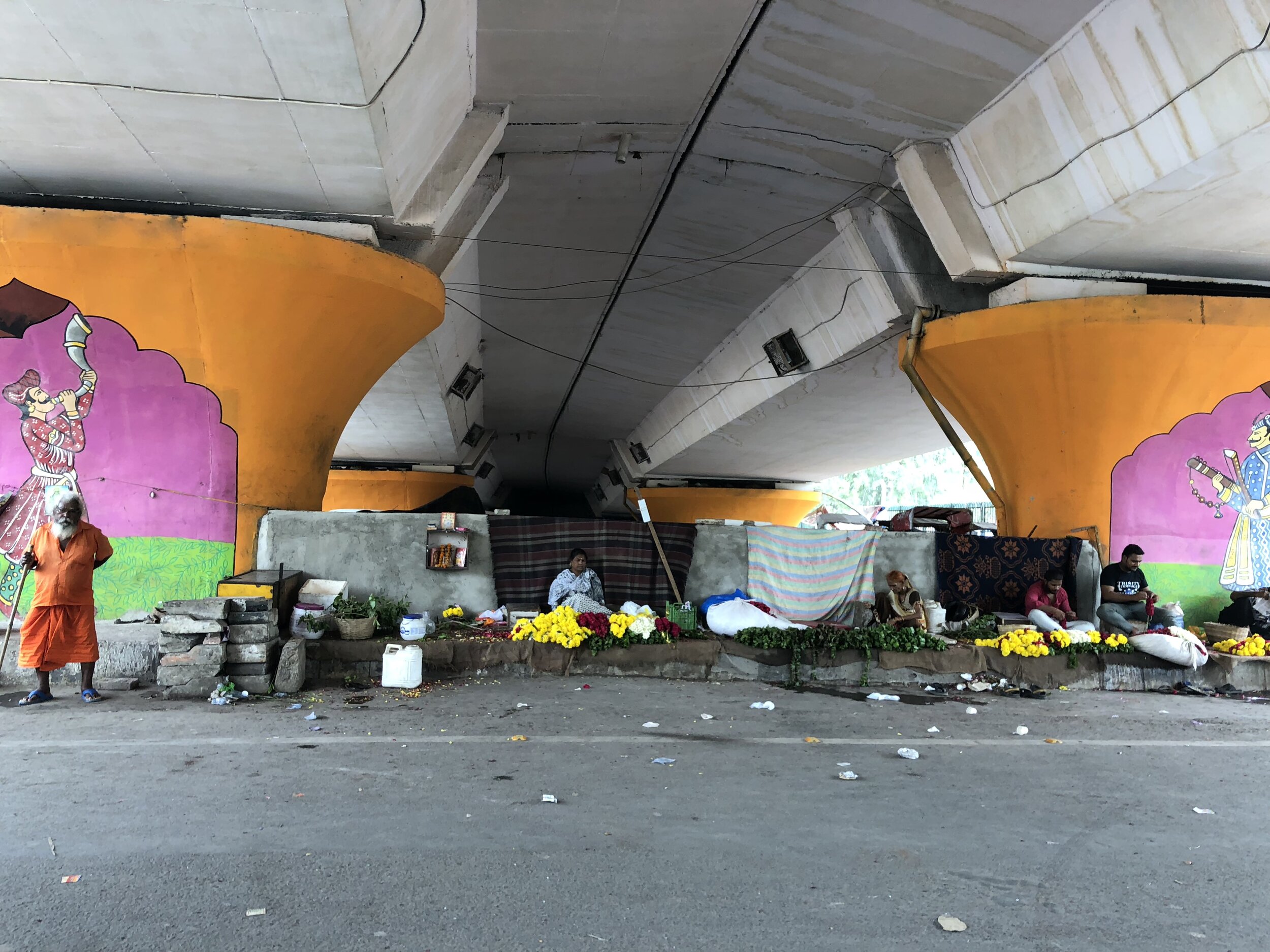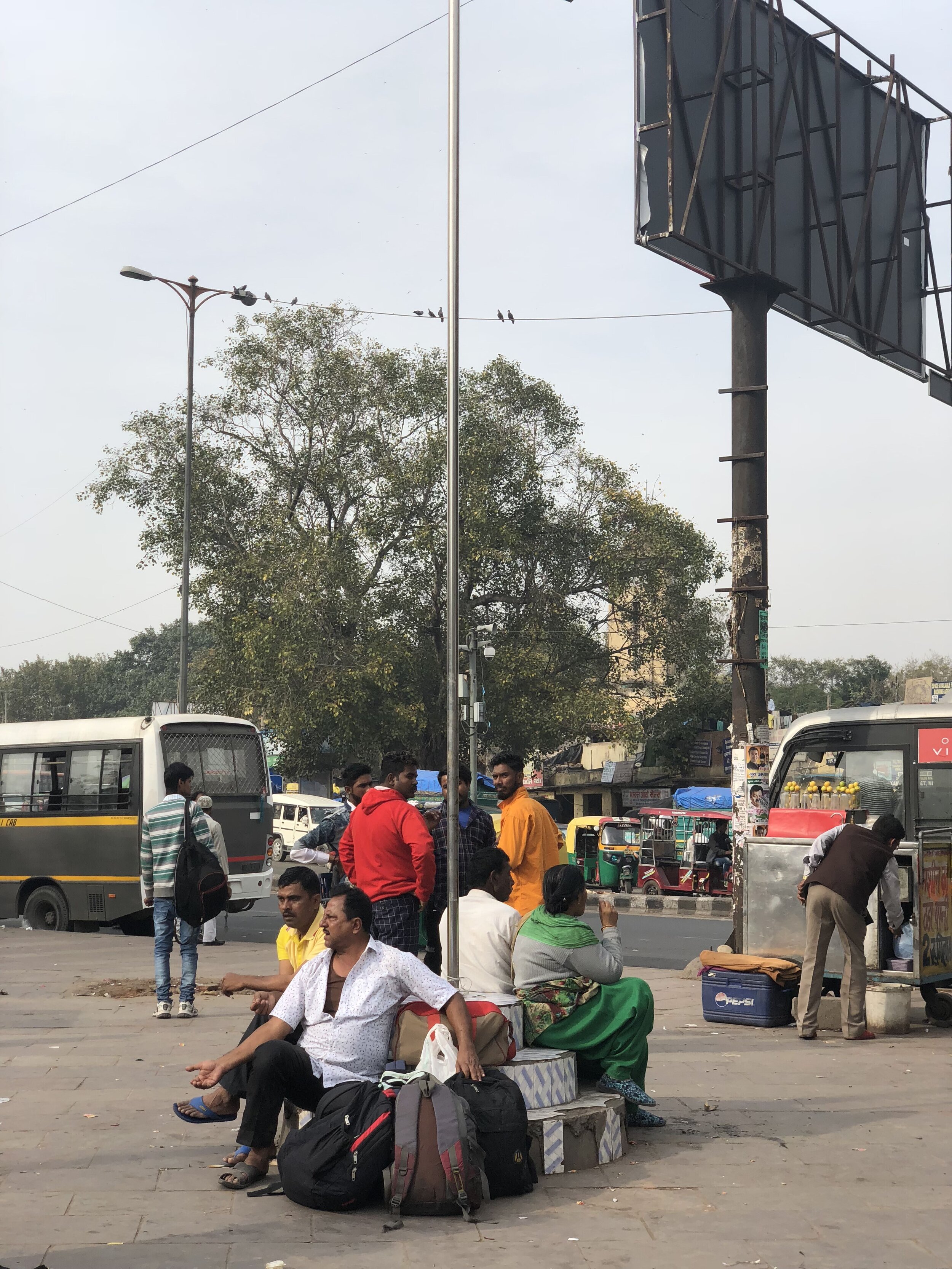Why invest in Delhi’s public spaces?
How can we, as citizens, co-create our urban realm?
Over 50% of Delhi’s urban area is ‘open’, but to loiter in the public realm does not commonly feature as part of our lifestyles. The city’s open spaces need to be designed for activity, safety and inclusivity. That is to say, we require a clear distinction between ‘open space’ and ‘public place.’
We argue here that open spaces are not limited to parks and playgrounds. They include streets, medians, pavements, abandoned lots, areas under flyovers, and spaces between buildings where ordinary, every-day activity forms an extraordinary mosaic. If we view these spaces as a capital asset, we can begin to unravel the long-term social and economic returns that can emerge by investing in them strategically.
The Sustainable Development Goals that underpin the current global urban agenda, call to “provide universal access to safe, inclusive and accessible, green and public spaces”. Yet, if the lack of provisions for public space in the ‘Delhi Master Plan 2021’ are to be taken as a beacon, our city is currently far from investing sufficient thought and action in its public spaces.
How then, can our city’s trajectory be altered?
How can we as citizens, rise to the occasion of claiming and co-creating our urban realm?
To begin, we can consider three broad indicators to gauge Delhi’s publics:
The quality of public space
The extent to which the city’s inherent character is included in development plans
Mechanisms for citizen participation in city-making.
The notion of quality can be drawn from the work of several organisations across the world that focus on public space analysis and design. Notably, the work of Project for Public Spaces, New York, Place Alliance, UK, and Gehl Studio, Copenhagen have helped us, at City Sabha, to create frameworks for assessing public space.
There are a few, key attributes that make a ‘great place’. Its uses (local businesses, land-use, property values, retail sales), comfort (crime statistics, sanitation, building conditions, environment), sociability (street life), and access (traffic, pedestrian activity, public transit). Enabling the conditions for one can allow several others to fall in place. For instance, improving the conditions of buildings and pavements along one stretch of road can attract local-businesses and more people, boosting retail sales. Mixing land-use can further diversify activities and crowds. Good lighting, space for pedestrians and clean parking, could bring about a reduction in crime. With a few measures, an open space can be transformed to an active public place.
Admittedly, Delhi presents a canvas vastly different from cities of the West. Our streets are densely populated with constant competition for pavement space by street vendors, pedestrians and two-wheelers. Walking to the neighbourhood park jangles the senses with blaring horns and pollution. Most of our city is not equipped with well-maintained pavements, and our roads are majorly designed for cars rather than for people.
“Under the layers of disorder we associate with informal shops and push-carts, there exist clear patterns of work and habitation.”
There is, however, a flip-side to Delhi’s density if we begin to consider it as a driver of development. Under the layers of disorder we associate with informal shops and push-carts, there are clear, self-driven patterns of work and habitation. If there is a clear demand for pavement space, perhaps our job is to design pavements specific to the Indian environment. Instead of removing street vendors and ‘squatters’, we can work together to arrive at mutually agreeable solutions for sharing city space. Instead of being threatened by the way our city lives, we could view it as an opportunity to design streets, pavements and parks that are organised, yet egalitarian, inclusive and full of life.
This of course, is no small task, and its consideration brings us to the third indicator: citizen participation in city-making. When it comes to city design, democratic processes can ensure that citizens exert their right to their city. It also gives a voice to what people really need, rather than what authorities presume they need, allowing for a more efficient allocation of resources.
Creating mechanisms for top-down (governments and expert committees) and bottom-up (citizens and civil society organisations) actors to work together towards a common goal is a method many cities are employing. By decentralising city design, we can equip local governments to work with citizens. For instance, Singapore’s Urban Redevelopment Association and Housing Development Board runs a participative program to revitalise their public spaces. Proposals are invited from citizens, funded by the state, and operated in collaboration with civic organisations and businesses. This has resulted in a number of successful public places across the city of Singapore.
Investing in Delhi’s open spaces can range across scales. We can start small, by undertaking low-cost changes to streets and parks, or focus on transforming neighbourhood lots and community centres. At a larger and more complex scale, we can begin to consider derelict areas that stand to be re-vitalised, such as the banks of the Yamuna. The objective is to render our city’s publics safe, attractive and usable in a manner that is inclusive. A recent example in this direction is of Venkataramanan Group’s intervention at Church Street in Bangalore, which successfully streamlined services, and pedestrianised a 700m stretch of road.
By 2030, the population of Delhi is expected to cross Tokyo’s to become the world’s most populated city. It is highly fallacious to believe that the models of growth adopted by Western cities developing in the 20th century is the same to be followed moving forward from 2020. Nowhere is a people-centric approach more urgently required than in the urban environments that are influential in shaping our lives. Designing sustainable cities and communities is not only about reducing carbon emissions, but about understanding how we can connect our citizens to governments, places, buildings, natural ecologies and most importantly, to other people.
With the next 20-year Master Plan of Delhi due in 2021, we stand at a point in history where the future of our city’s development could continue plodding on a haphazard path, or take small but powerful steps towards long-term sustainability, resilience and inclusivity. We can begin by claiming our public spaces.






